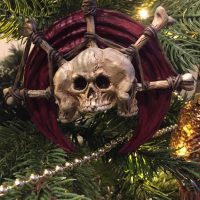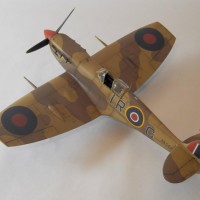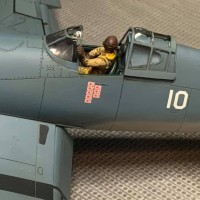History gets saved at the last minute
Was up at the LHS this afternoon reading "airplane porn mags" and found out that last year the second-oldest C-119 "flying boxcar" was up for sale as aluminum scrap, when the AF Museum discovered it was the second-oldest C-119 left in existence, and the sole survivor of the eight C-119s that dropped the Treadway Bridge to the Marines retreating from the Chosin Reservoir, which made their escape possible. Not only that, but it "dropped the last part of the bridge." Which means it is the airplane described below, from my book "The Frozen Chosen."
Well done, Air Force Museum!
"However, the road was not yet open. The Chinese had blown a 24-foot gap in the critical bridge halfway down the pass, where water from the Changjin Reservoir moved through a tunnel into four giant pipes called "penstocks." The bridge crossed the penstocks at a point where the road clung to an almost sheer cliff. The gap would somehow have to be bridged if the Marines were to get their tanks, artillery, and vehicles down the pass.
"Division engineer Lt. Colonel Partridge had made an aerial reconnaissance of the situation on 6 December and determined the gap could be spanned by four sections of an M-2 steel "Treadway" bridge. While he had no such bridge sections, fortuitously there was a detachment of the Treadway Bridge Company from the Army's 58th Engineer Battalion at Koto-ri, with two Brockway trucks that could carry the bridge sections if they could be air-delivered.
"A Treadway Bridge is composed of four sections, each of which weighs 4,000 pounds. There were eight sections of bridge located in Japan; these were trucked to Tachikawa Air Base outside Tokyo on 6 December. Eight C-119s flew up from Ashiya Air Base to pick up the sections and return them to Ashiya, where the Army 2348th Quartermaster Airborne Supply and Packaging Company packed the sections for air drop with a 48-foot cargo parachute on each end; they were then loaded on the C-119s, one section per plane. The C-119s then flew to Yonpo, where one section was test-dropped successfully, landing dented but useable.
"At 0930 hours, December 7, the eight C-119s arrived over the drop zone outside Koto-ri, which was marked with orange panels. Aboard each transport, all the ropes holding each bridge section had been cut but one, which remained in place to prevent a premature drop. It would be cut with an axe as one very small parachute, spring-loaded to throw it into the slipstream, would then deploy a larger parachute that actually pulled the bridge section out. The spring was tripped by the crew chief on the pilot's command while another crew member cut the last rope. The whole operation took five seconds, which was critical if the sections were to land successfully and safely.
"The first section was dropped successfully on target. The rest of the C-119s followed, unloading the bridge sections on order from the engineers on the ground. Five sections were dropped successfully, while the sixth fell into Chinese hands. The seventh was damaged when it hit the ground.
"The last C-119 was flown by Captain Jim Inks. As he approached the drop zone, he gave the order to his crew chief, who pulled the spring release while the assistant crew chief cut the last rope. “Unfortunately, that pilot chute mechanism failed to work, and we were past the drop zone with our load still aboard,” Inks later recalled. The situation inside the plane rapidly went from bad to worse. “We were in a box canyon with a loose load in the cargo compartment, and it was doubtful if I had the power to climb the overloaded aircraft over the mountains to get out of there.” The canyon wasn't wide enough for a 180-degree turn. Inks was sure he could dump the load if he climbed steeply, which would allow them to escape the canyon, but this section of the bridge was vital if the entire thing was to be successfully assembled. Without the drag chutes, there was the possibility the bridge section would hang up in the cargo compartment. Inks ordered the cargo crew to stay forward of the bridge section, while he, his co-pilot and the navigator looked for a way out. “The navigator picked a canyon coming in from the east that he thought would continue downgrade, but as soon as we turned into it, we realized it was upgrade and pretty steep.” Meanwhile, the cargo crew managed to get a rope across the 2,500 pound section and secure it somewhat. “We were in a hell of a spot.”
"The C-119 was less than 200 feet above the rapidly-rising canyon floor, when suddenly Inks spotted another canyon beyond the ridge to the left. “We skidded into it not ten feet from the rocks and started back toward the main canyon we had just left.” Inks managed to bring the C-119 around and was headed toward the drop zone again. “The crew chief managed to hit the bridge with a sledge hammer that started it on its way out, it didn't hang up, and our span of the bridge was delivered fifteen minutes late.”




Wow, that is some story and a great illustration of the cool and calculating work under pressure of armed forces personnel!
Hi Tom,
Thanks for sharing this story with us. I can imagine they all (the crew) lost some weight after this extremely hazardous situation they got in to.
Dropping heavy loads is a precision operation. A loose heavy load in the back of the aircraft can be a real killer.
Regards, Dirk / The Netherlands.
Thanks, Tom...the airdrop story was fantastic.
Merry Christmas!
Great story Tom.
My Dad was on the ground there with the Marines. He and some others that were left alive from his US Army unit (over run by the Chinese) fought there way down to the port of Hungnam. Dad said they cleared / covered the hill tops on one side of the "advancing to the rear" road and the Marines were on the other side of the road.
His last comment about the whole ordeal was watching (from a ship) the port of Hungnam explode, and how everything was burning.
Thanks for sharing this, and hope you have a Merry Christmas.
There were two planes that he said were his favorites... The C-47 and the C-119 Boxcar. I'm sure that his experiences in Korea helped to form those choices.
He would have been happy to hear the last 119 "Boxcar" was saved. Unfortunately he died in 2012.
Kudos to the AF museum...well done!
It's actually going to be at the Dover AFB transport museum.
Oh...that's appropriate, too.
Tom, I can only say "WoW!" Great narrative on an outstanding operation. And good for the Air Force Museum folks for saving an important historical piece. I've flown out of Dover AFB but I never knew there was a museum there.
Louis, wow! - your Dad WAS one of the "Frozen Chosin!" (I hope it's OK that I used your phrase, Tom.)
Actually "Frozen Chosen" was their name for themselves. We can all use it.
Yes my Dad was one of the "Frozen Chosen ". He used to also joke with us about how he was still waiting on his turkey dinner that President Truman promised all of the troops in Korea. He apparently never got his turkey dinner and told me that even if he had, it would have been frozen solid in a very short time. 25-30 below zero was the typical temperature these men encountered.
That was actually good old "Dugout Doug" MacArthur who promised turkey dinners for everyone. And at Chosin, yes, they were all frozen, and re-froze in minutes after being taken out of the pot they were being boiled in.
I just learned something here. Dad always said it was Truman. Thanks
Wherever you are in the world at Christmas, the military tries to get you a turkey dinner, with the fixins. The one I had whilst in the RVN, I'd worked the night shift, and went to bed. I missed the whole thing, (at noon, it was) and had a bologna sandwich, later that afternoon. Golden memories! The Christmases I've had since have been a good deal better in a number of ways.
There were two guys in Fox Company (the ones who held the pass in the bloodiest small-unit action in American history - 100% casualities WIA and KIA), Fred and Ernie Gonzales (and "No, everybody named Gonsales ain't f'n related!") - one from East LA, one from Long Beach and they met over there (where it turned out the one from Long Beach was dating the cousin of the one from East LA). Lifelong friends, they died within 6 months of each other 5 years ago. And every single Thanksgiving ever after, they and their growing families had "Thanksgiving with ALL the trimmings." I was fortunate to be invited to the 1990 event, when I was interviewing them for what I thought was going to be a screenplay - 26 years later the interviews turned into a book. I think that was the best Thanksgiving I ever celebrated.
Wow... They passed away roughly at the same time that I lost my Dad... How eerie...
Almost all the "Frozen Chosen" are now departed. Ernie, at 17 1/2 was the youngest one there.
TOM MAKE THE MOVIE! Hollywood is turning out mostly rubbish that pollute young minds. It is time the youth get to see real heroes in action and not the CGI make belief Super Hero nonsense. The Korean War has been SO neglected that the phrase "The forgotten War" is becoming a sad reality. The exploits and suffering that the Marines endured at Chosin is legendary. It ranks up there with Iwo Jima.
Excellent points Morne. A realistic historically correct movie about the Frozen Chosen would be great.
Besides being the "Forgotten War, most people don't realize that the US Army was also there on the ground with the Marines at Chosin.
Just like Tom stated, if not for the Army and the sacrifices they made, along with horrible casualties the Army troops endured, the Marines may very well not have made it out...
The US Army units took the brunt of a large scale Chinese attack on the North East flank of the Chosin reserviour. This slowed the Chinese down some, and allowed the Marines to do what they did.
Most don't know this...
The US Army 31st RCT actually fought against two Chinese Divisions at Chosin. They were heavily outnumbered.
So absolutely right. And somehow thre US Army denied them for 30 years. But if they had not held off those two divisions, and those Chinese forces could have attacked the Marines at Yudam-ni, history would record the Massacre at Chosin, rather than the Breakout From Chosin.
Actually it would take a 12-episode HBO miniseries to tell the whole story.
There is, of course, the letter Col. Orin Beale, who was in charge of transport that got them out of there, to his old commander, "Howlin' Mad Smith"::
“I just thought that you might like to have a few words on first hand information from an ole friend and an ole timer. I've seen some brave men along that road and in these hills, men with feet frozen, men with hands frozen still helping their buddies, men riding trucks with frozen feet but fighting from the trucks. I think the fight of our 5th and 7th Regts, from Yudam-ni in to Hagaru-ri was a thing that will never be equaled. Litzenberg and Murray showed real command ability and at no time did any of us doubt their judgment."
That's a screenplay.
Ask me no questions, I'll tell you no lies. 🙂
The Hudner and Brown incident also took place at this time. The whole Chosin story is begging to be made into an HBO mini series!
The South African Flying Cheetahs of 2 Squadron SAAF attacked the Hydro-electric Power plants at Chosin and Fusen on the 23, 24 and 26 June 1952 destroying most of the targets allocated to them. Having seen photos of the conditions that the combatants had to endure at Chosin, it can only be described as pure hell. However, the fighting spirit of the men deployed at Chosin was greater than the spirit of defeat.
Morne: Shhhhhh... don't queer the deal. 🙂
As Col. Orin Beal said in a letter to his old commander Howlin' Mad Smith: "I think the fight of our 5th and 7th Regts, from Yudam-ni in to Hagaru-ri was a thing that will never be equaled."
That's a movie.
This is a story that has to be told, Being a history teacher it is so sad to see the youth of today knowing little to nothing about the sacrifices that soldiers had made in wartime. In South Africa the youth in general is ill informed. I took my class to see Hacksaw Ridge. It was an eye opener to many of my learners.
Here's an article on the rescue:
http://warbirdsnews.com/aviation-museum-news/air-mobility-command-museum-rescues-c-119.html?utm_source=Warbirds+News+Comments&utm_campaign=3b1b061cd6-EMAIL_CAMPAIGN_2017_12_25&utm_medium=email&utm_term=0_1095b4fe49-3b1b061cd6-281687921